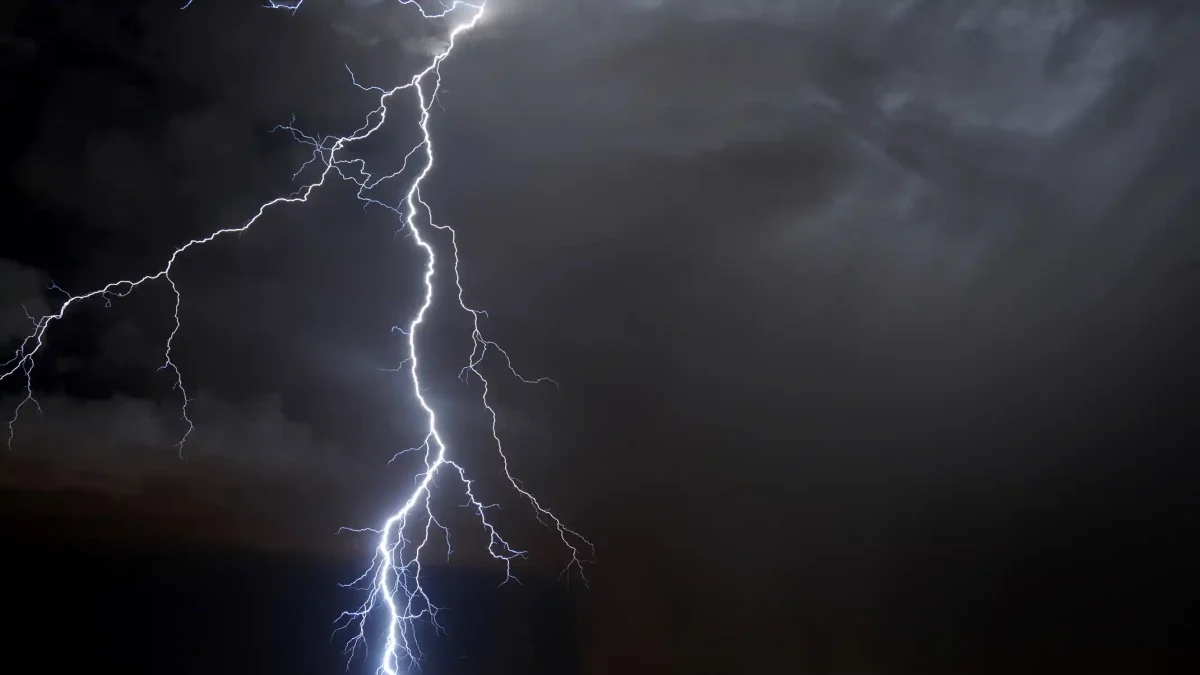Servicing All Areas Around Brisbane, Gold Coast and Northern New South Wales

Living in Southeast Queensland and Northern NSW means preparing for unpredictable weather. If you want to protect your fence from storm damage, you’ll need to reinforce weak points and take preventative measures before extreme weather hits. High winds, heavy rainfall, and even hail can wreak havoc on properties, particularly fencing. Whether you have a chain wire fence, timber, Colorbond, or aluminium fencing, preparing it for severe weather is important to prevent costly damage and ensure long-term durability.
In this guide, we’ll go through the steps to help you prepare your fence for severe weather in Brisbane and Gold Coast. Always ensure you have appropriate PPE on when working on a fence.
1. Inspect Your Fence for Weaknesses
Before storm season starts or before the arrival of a severe weather event, thoroughly inspect your fence for signs of wear and tear. Look for:
If you spot any of these issues, address them immediately. Even a minor weakness can become a major failure point during a storm.
2. Reinforce Fence Posts
The strength of your fence largely depends on its posts. Strong winds can easily uproot or topple posts that aren’t properly secured.
If you’re in an area prone to extreme winds, consider installing deeper footings or adding stabilisers to strengthen the fence line.
3. Tighten Chain Wire Mesh and Fasteners
Chain wire fencing is designed to be flexible, which helps it withstand high winds better than rigid fences. However, loose mesh or fittings can lead to significant damage.
A properly tensioned chain wire fence is far more resilient in high winds.
4. Remove shade cloth from chain wire fencing if present
Shade cloth is a fantastic way to create a privacy screen for a chain link fence, especially if your property is in a busy suburb, however shade cloth can both cause and be damaged by extreme wind.
Once the storm or weather event has passed, simply reaffix your shade cloth back to the fence line in reverse to the way you took it down.
5. Trim Overhanging Trees and Branches
One of the biggest threats to fencing during storms is falling trees and branches. Heavy winds can snap branches, sending them crashing into fences and causing serious damage.
Larger trees can be extremely difficult to cut safely, please contact a professional arborist if you are unsure about any trees near your fence.
6. Clear Debris Around the Fence
Leaves, rubbish, and loose objects near your fence can become projectiles in a storm, leading to unnecessary damage.
For larger clean up projects you can contact your local garden care expert to arrange a time for them to tidy up your property.
7. Check for Drainage Issues
Heavy rain can soften the ground, making fence posts unstable. Ensuring proper drainage around your fence can prevent waterlogging and soil erosion.
If necessary, consider adding gravel or drainage trenches to redirect excess water away from the fence line.
8. Secure Gates and Latches
During a storm, strong winds can force gates open or even rip them off their hinges.
A well-secured gate can prevent unnecessary strain on the entire fence structure.
9. Consider Wind-Resistant Upgrades
If your area is prone to frequent storms, consider reinforcing or upgrading your fence to improve durability.
10. Regular Maintenance and Post-Storm Checks
Routine maintenance is key to ensuring your fence remains strong season after season.
Storm-proofing your fence is an important step in protecting your property, especially in areas like Brisbane, Gold Coast and Northern New South Wales, where severe weather can be unpredictable. Whether you have chain wire fencing or another type of fence, regular inspections, reinforcement, and smart landscaping choices can significantly reduce the risk of damage.
If you’re unsure about the stability of your fence, or if you need chain wire fencing repairs or upgrades, contact a professional fencing contractor for expert advice. Taking the time to prepare now will save you from costly repairs later—and ensure your fence stands strong through whatever Mother Nature throws at it. To stay ontop of the latest weather forecasts, regularly check local weather website such as the Bureau of Meteorology
Stay safe and storm-ready!